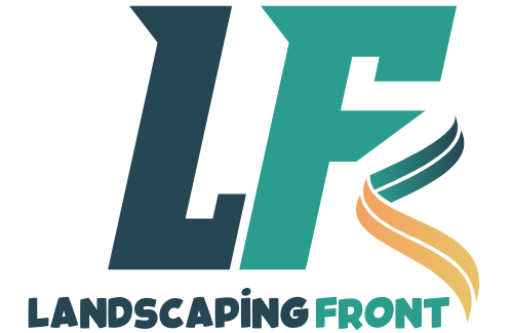Landscaping edging is a crucial element in garden design that often goes unnoticed but plays a significant role in enhancing your outdoor space. It creates clean, defined borders between lawns, flower beds, pathways, and other features, giving your garden a polished and organized look. Choosing the best landscaping edging for your garden depends on several factors, including materials, style, and functionality. Whether you’re aiming for a modern, minimalist aesthetic or a more natural, rustic vibe, the right edging can transform your yard into a beautiful and practical haven. In this guide, we’ll help you make an informed choice.
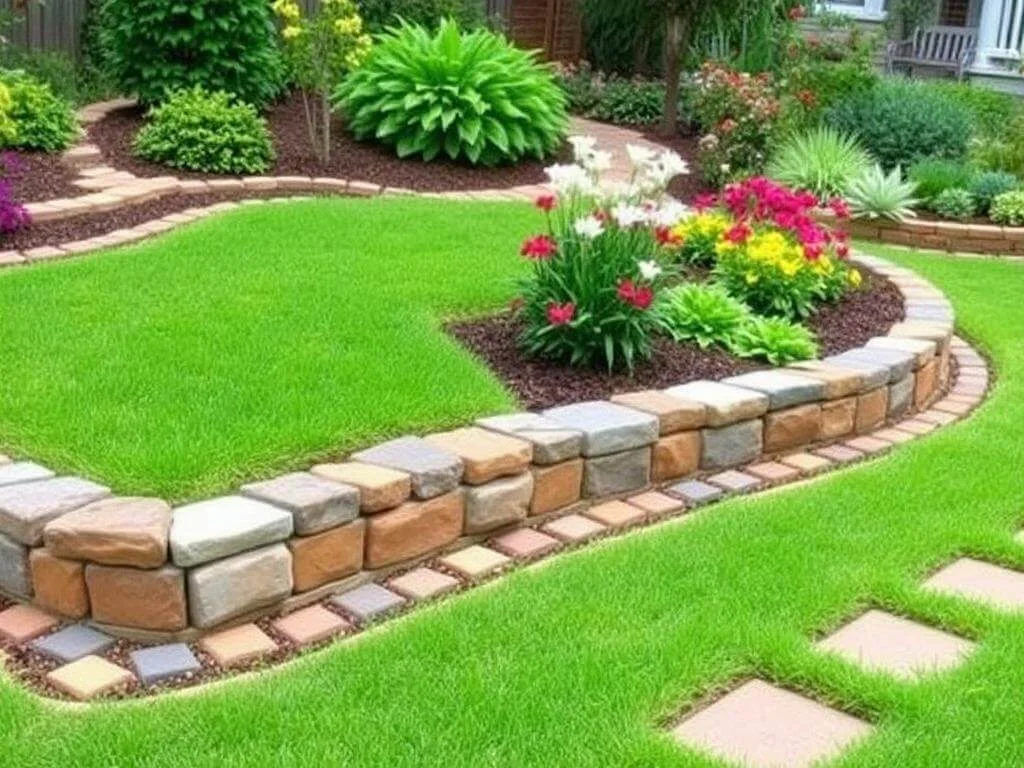
a. What Is Landscaping Edging and Why Is It Important?
Landscaping edging refers to the process of creating distinct boundaries in a garden or outdoor space. It involves using various materials like stone, metal, plastic, or wood to separate different areas, such as lawns, flower beds, pathways, or hardscaping features. This simple yet effective technique not only enhances the overall appearance of your garden but also serves practical purposes.
One of the key benefits of landscaping edging is its ability to provide structure and organization. By clearly defining spaces, it helps maintain a clean and tidy look while preventing plants and grass from encroaching into unwanted areas. For example, edging can keep mulch in flower beds or gravel in pathways from spilling onto your lawn.
Beyond aesthetics, landscaping edging plays a vital role in reducing garden maintenance. It minimizes the need for constant weeding and trimming by acting as a barrier against the spread of invasive plants. Moreover, it allows you to create smoother mowing edges, making lawn care easier and more efficient.
From a design perspective, landscaping edging can enhance the visual appeal of your garden. With various materials and styles available, you can choose edging that complements the theme of your outdoor space—be it a sleek modern garden, a charming cottage-style yard, or a vibrant flower bed display.
Ultimately, landscaping edging is more than just a decorative feature. It’s a functional element that improves the usability, aesthetics, and maintenance of your garden, making it an essential aspect of any well-planned outdoor space.
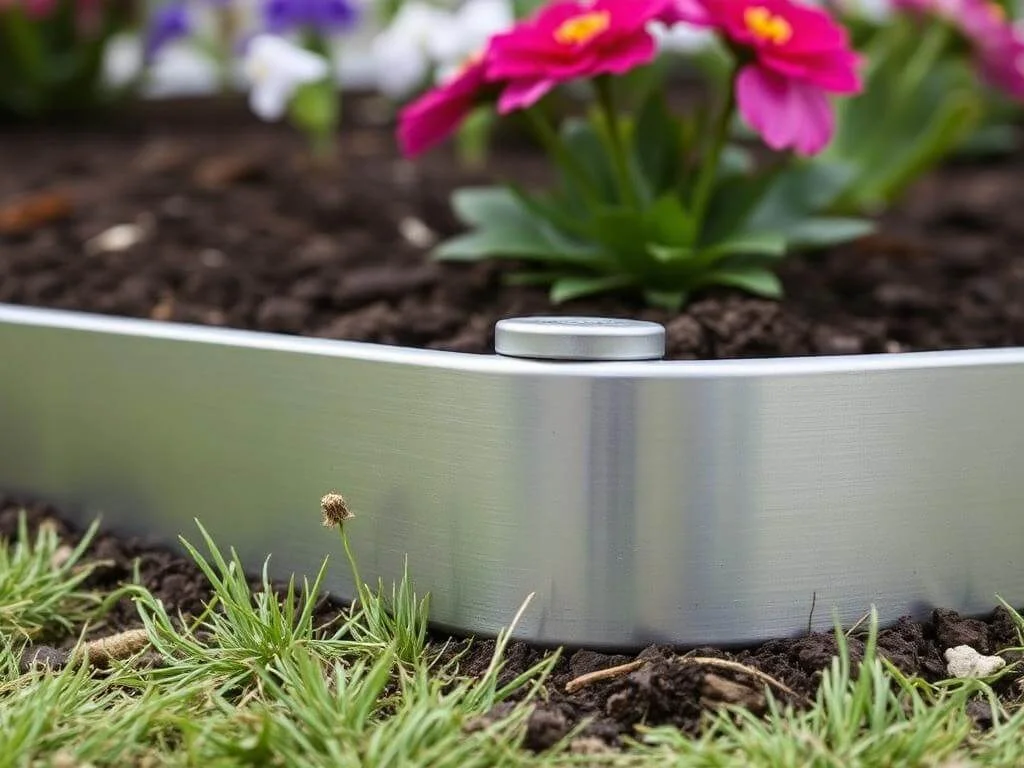
b. Types of Landscaping Edging: Which One Is Right for Your Garden?
Choosing the right type of landscaping edging can significantly impact the appearance and functionality of your garden. Each material has unique characteristics, making it essential to select the one that aligns with your garden’s style, budget, and maintenance preferences. Below are some popular options to help you make an informed decision.
1. Plastic Landscaping Edging
Plastic edging is a versatile and affordable choice for many gardens. Its flexibility makes it ideal for creating curved borders around flower beds or pathways. Available in various colors and styles, plastic landscaping edging is lightweight and easy to install, making it a favorite for DIY enthusiasts. However, it may not be the most durable option for areas with extreme weather conditions.
2. Metal Landscaping Edging
Metal edging, often made of steel or aluminum, is known for its sleek and modern appearance. It provides clean lines and works well in contemporary garden designs. Metal landscaping edging is highly durable and resistant to weather, ensuring a long lifespan. While it may require professional installation for precision, the results are often worth the investment for those seeking a polished finish.
3. Wood Landscaping Edging
For a natural and rustic look, wood edging is an excellent choice. Options include treated timber, cedar, or bamboo, which can be customized to suit various garden styles. Wood landscaping edging blends seamlessly with natural surroundings and is relatively easy to install. However, it may require regular maintenance, such as sealing or staining, to prevent rot and weather damage.
4. Concrete and Stone Landscaping Edging
Concrete and stone edging offer unmatched durability and a timeless aesthetic. These materials can create sturdy, long-lasting borders that add an elegant touch to gardens and pathways. Stone landscaping edging is particularly suited for traditional or formal garden designs, while concrete allows for creative customization, such as stamped or colored finishes. The main consideration is the higher cost and effort required for installation.
5. Brick Landscaping Edging
Brick edging combines durability with charm, making it a versatile choice for various garden styles. It can be arranged in patterns, such as herringbone or staggered designs, to create visually appealing borders. Brick landscaping edging is low-maintenance and weather-resistant, but proper installation is key to prevent shifting over time.
Each type of landscaping edging offers unique benefits and considerations. By assessing your garden’s needs, design preferences, and budget, you can choose the ideal material to enhance your outdoor space and simplify its maintenance.
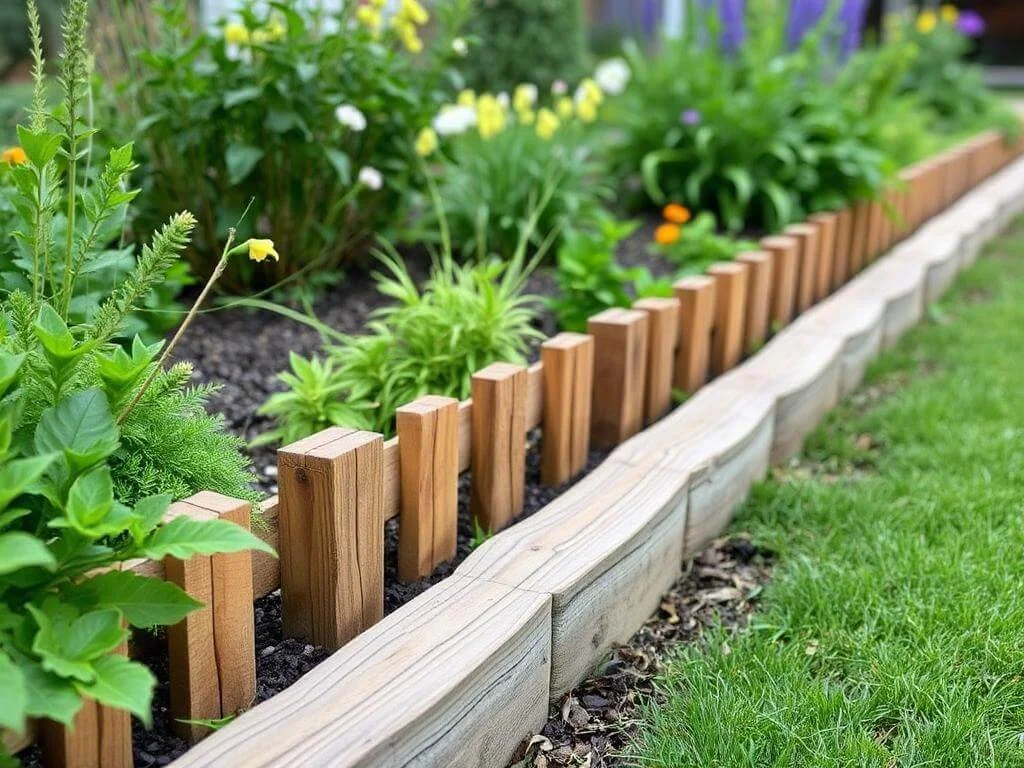
c. Factors to Consider When Choosing Landscaping Edging
Selecting the best landscaping edging for your garden involves more than just picking a material or style that looks good. To ensure long-term satisfaction and functionality, it’s essential to weigh several important factors. Below are key considerations to help you make the right choice.
1. Garden Style and Design
The landscaping edging you choose should complement the overall theme of your garden. For instance, sleek metal edging pairs well with modern landscapes, while wood or stone edging suits natural or rustic designs. Take into account the colors, textures, and shapes in your garden to ensure the edging blends seamlessly with your existing features.
2. Durability and Maintenance
Durability is a crucial factor, especially for gardens exposed to extreme weather conditions or heavy foot traffic. Materials like metal, concrete, and stone are known for their longevity, while plastic or untreated wood may require more frequent replacement. Additionally, consider how much maintenance you’re willing to commit to—some materials, like wood, may need regular sealing or staining to remain in good condition.
3. Budget Considerations
Your budget will significantly influence your choice of landscaping edging. While plastic and basic wood options are cost-effective, premium materials like stone or decorative metal can be more expensive. However, investing in durable materials might save you money in the long run by reducing replacement and maintenance costs.
4. Climate and Weather Resistance
The local climate plays a significant role in the performance of landscaping edging. For example, wood may not be ideal for areas with high humidity or heavy rainfall due to its susceptibility to rot. Similarly, plastic edging might become brittle in extreme heat or cold. Opt for materials that can withstand your region’s weather conditions to ensure lasting performance.
5. Ease of Installation
Consider whether you’ll be installing the landscaping edging yourself or hiring a professional. DIY-friendly options, such as plastic or prefabricated metal edging, are great for homeowners who want to save on labor costs. On the other hand, materials like stone or concrete may require professional installation for a polished and stable finish.
6. Functionality and Purpose
Think about the specific purpose of your landscaping edging. Are you using it to create a decorative border, prevent mulch from spreading, or separate different garden zones? For functional needs like weed control or retaining soil, heavier and more durable materials may be necessary.
By evaluating these factors, you can choose landscaping edging that not only enhances the beauty of your garden but also meets your practical needs. A well-thought-out decision will ensure your edging remains effective and attractive for years to come.
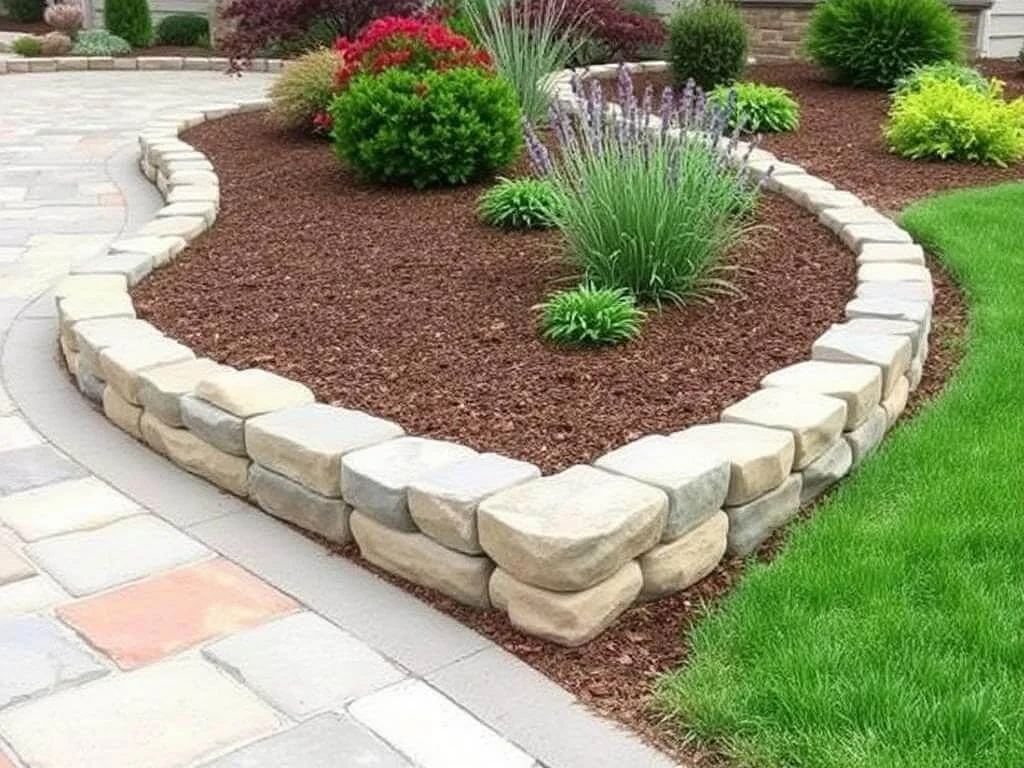
d. DIY vs. Professional Installation of Landscaping Edging
When it comes to installing landscaping edging, homeowners often face the choice between doing it themselves or hiring a professional. Both options have their benefits and drawbacks, so it’s essential to weigh them carefully based on your budget, skills, and project requirements. Here’s a closer look at each approach to help you decide.
1. Pros of DIY Installation
- Cost Savings: One of the biggest advantages of DIY landscaping edging is the potential to save money on labor costs. By handling the installation yourself, you only need to invest in materials and tools.
- Creative Freedom: DIY projects allow you to customize the design and placement of your edging to match your vision. You can experiment with curves, patterns, and materials to create a truly unique look.
- Immediate Gratification: With a DIY approach, you can work at your own pace and enjoy the satisfaction of seeing the results of your efforts firsthand.
2. Cons of DIY Installation
- Learning Curve: Installing landscaping edging requires some basic knowledge and skills, such as digging, leveling, and securing materials. Mistakes during installation can lead to uneven edges or reduced durability.
- Time-Consuming: Depending on the size and complexity of your project, DIY installation can take several hours or even days to complete.
- Limited Tools and Resources: DIY enthusiasts may lack access to specialized tools or materials needed for certain types of edging, such as stone or concrete.
3. When to Hire a Professional
- Complex Projects: If your landscaping edging project involves intricate designs, heavy materials, or large-scale areas, it’s often best to rely on a professional. They have the expertise to handle complex installations efficiently.
- Precision and Durability: Professionals ensure that your landscaping edging is installed correctly, with proper leveling and secure placement, resulting in a polished and long-lasting finish.
- Time Efficiency: Hiring a professional can save you significant time, especially for large projects or when you have a tight schedule.
4. Cost Comparison
- DIY Costs: The expenses for a DIY project typically include materials, basic tools, and possibly rental equipment for certain tasks. For example, installing plastic or metal edging might cost less than $100 for a small garden.
- Professional Costs: Professional installation includes labor fees and material costs, which can vary based on the complexity and scale of the project. While this option is more expensive upfront, it may save money in the long run by reducing the need for repairs or adjustments.
Whether you choose to install your landscaping edging yourself or hire a professional depends on your specific needs and circumstances. For smaller, straightforward projects, DIY can be a rewarding and cost-effective option. However, for complex designs or when precision is key, investing in professional installation ensures a durable and visually appealing result.
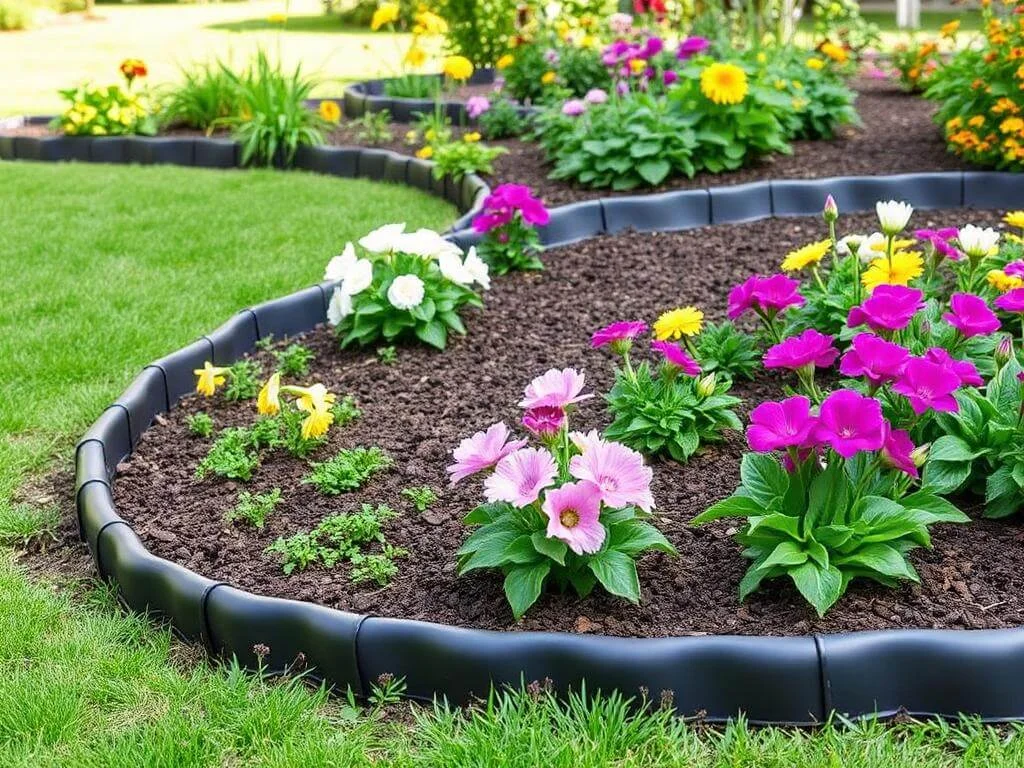
d. Tips for Maintaining Your Landscaping Edging
Once you’ve selected and installed the perfect landscaping edging for your garden, the next step is ensuring it remains in top condition. Regular maintenance helps extend the lifespan of your edging, keeping it both functional and aesthetically pleasing. Here are some essential tips for maintaining your landscaping edging, so it continues to enhance your garden for years to come.
1. Regular Cleaning and Upkeep
Landscaping edging, especially materials like plastic or wood, can accumulate dirt, debris, and organic matter over time. To keep it looking fresh, clean your edging regularly. For plastic and metal edging, a simple rinse with a garden hose and a scrub brush is usually sufficient to remove dirt and algae buildup. For wood edging, consider using a power washer or a mild cleaning solution to get rid of grime.
2. Seasonal Checks
Different weather conditions can affect the condition of your landscaping edging. In areas with extreme winters or summers, materials like plastic may become brittle or warped, while wood may rot or fade. At the start of each season, inspect your edging for any signs of wear and tear, such as cracks, warping, or discoloration. Address any issues promptly to prevent further damage and ensure your landscaping edges remain sturdy.
3. Repair and Replacement Tips
Even the best landscaping edging materials can suffer damage over time. If you notice cracks, chips, or sections becoming loose, take the time to repair or replace them. For materials like plastic or wood, replacing individual pieces is usually an easy fix. Metal and stone edging may require professional repairs, depending on the extent of the damage.
4. Enhancing Longevity
To help your landscaping edging last longer, consider using a sealant or protective coating on certain materials. For example, wood edging can be treated with weather-resistant stains or sealants to protect it from moisture, UV rays, and pests. Stone or brick edging may benefit from occasional resealing to prevent moss or algae growth, while metal edging can be treated with rust-resistant coatings. Additionally, avoid heavy lawnmower traffic near the edging to prevent physical damage.
Proper maintenance is key to keeping your landscaping edging functional and beautiful. By cleaning it regularly, performing seasonal checks, and addressing any issues early, you can ensure that your edging serves its purpose for years to come. With the right care, your landscaping edging will continue to enhance your garden’s design and reduce the need for costly replacements.

Conclusion
Choosing the best landscaping edging for your garden is an essential step in creating a visually appealing and well-organized outdoor space. Whether you opt for plastic, metal, wood, or stone, the right material will not only enhance your garden’s aesthetic but also help maintain its structure and functionality. By considering factors such as design, durability, climate, and maintenance, you can make an informed decision that aligns with both your garden’s needs and your personal style.
While DIY installation can be a cost-effective solution for smaller projects, more complex designs may benefit from professional installation to ensure precision and durability. Regardless of your choice, remember that regular maintenance is key to preserving the beauty and longevity of your landscaping edging. With the right care, your landscaping edging will continue to define and protect your garden, creating a stunning and functional outdoor space for years to come.
